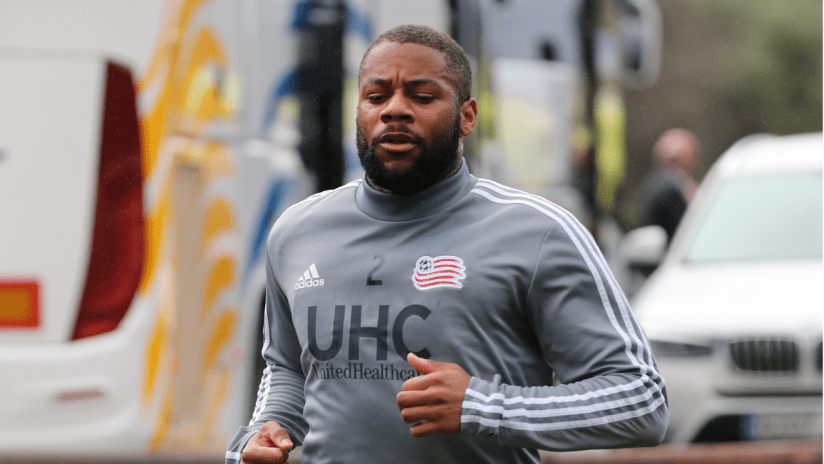FOXBOROUGH, Mass. – Just as he had a thousand times before throughout the course of his seven-year professional career, Andrew Farrell slid in to block a shot during a mid-February training session at Gillette Stadium. But on this particular occasion, what happened next could hardly have been predicted.
As the shot flew past Farrell, he turned quickly to see if it had found the net. It hadn’t. What the shot did find, unfortunately, was the post, and as the ball ricocheted violently back into the field of play, it hit Farrell square in the left eye, which he didn’t have time to close before impact.
At first, it was believed to be a minor injury. Even though Farrell said he initially “lost some vision” in the aftermath of the blow, there was hope that he would be able to join his teammates in Bradenton, Florida, at some point during the second leg of preseason.
But a visit to an eye specialist revealed a much more serious diagnosis: Farrell had ruptured his retina, leaving the 26-year-old defender bedridden for two weeks, unable to partake in any physical activity and certainly unable to get on a flight and travel to Florida.
For Farrell, who has started at least 30 games in each of his first six professional seasons and is unaccustomed to watching from the sidelines, it’s been an uncomfortable situation, and one he’s hoping will be in the rearview mirror sooner rather than later.
“It’s been not fun at all. It’s been really weird,” Farrell said. “It’s been tough, but it just makes it a little bit more exciting when I get to be back with the guys. It shows how much it means to me to just be a part of this team, and be able to practice and be part of the team.”
There was good news last week, when Farrell was cleared to progress past the exercise bike and return to the field for jogging and agility exercises. While he’s still unable to participate in any contact drills or even gym workouts – and while he must wear protective eyewear during physical activity – just getting back outside and getting his foot on the ball has been a welcome relief.
That also means that whenever Farrell is fully cleared to return, he won’t need much time to get up to speed, as he’s recently been able to keep his fitness level high during his recovery.
“I’m really hoping that it’s nearing completion on him being able to join, because he feels completely fine,” said head coach Brad Friedel. “It’s just that he has to wait for the retina to heal. Once that’s healed, he will be not too far off fitness, because he is able to do a lot of fitness activities.”
The fact that “he feels completely fine” has been the most frustrating part of the recovery for Farrell, who no longer has any vision issues or lingering symptoms. But he also understands the need to be as cautious as possible when it comes to vision, not just for his future as a professional athlete, but for his own long-term health.
“It’s getting better and better. I can see fine,” Farrell said. “Even though I feel like I could probably try to play, the doctors are pretty adamant in not letting me do that. You only get two eyes in your life.”
“It shouldn’t be too much longer, but again, just for quality of life, we have to let it heal,” added Friedel. “Because that could be quite severe if we don’t.”
Farrell said that the doctors’ initial target date for a full return was early April, but he’s still hopeful that he could be back on the field even sooner, with his next checkup scheduled for this coming Friday.
“I’ve gone every Friday just to go check and see if I’m able to do more and more in practice,” Farrell said. “I’m going this week to see if they can move that (return date) up and see how the eye’s healing up.
“Hopefully this Friday brings better news and they move that clearance date up, but (in the meantime) just trying to stay positive.”











